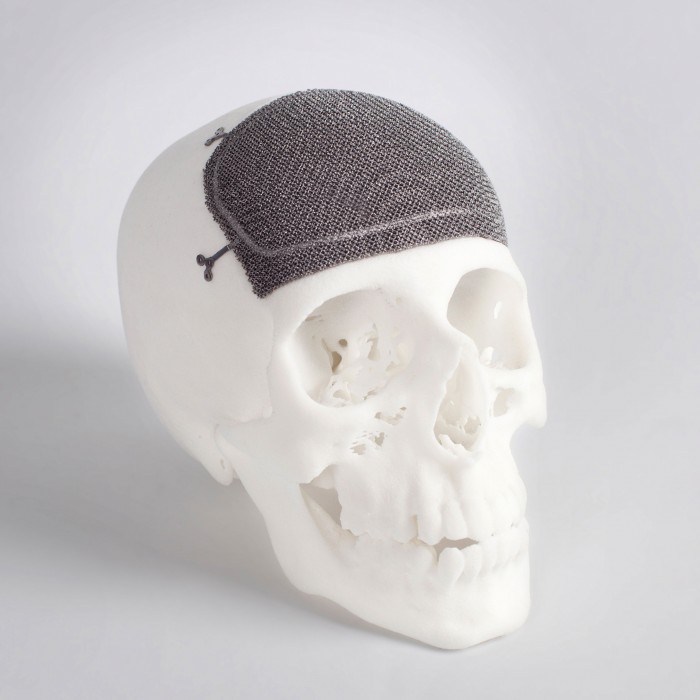The Key to Repairing Your Bones May Come Out of a Printer
Orthopedic surgeons are relying more and more on 3-D printing to build replacements for their patients’ defective or worn out bones.
This year surgeons around the world will implant tens of thousands of 3-D printed replacements parts for hips, knees, ankles, parts of the spine, and even sections of the skull.
Most of them look a lot like their conventionally made titanium counterparts. But the first few 3-D printed implants tailored specifically to an individual’s anatomy may hint at a future in which customized bone replacements are commonplace.

Printed parts represent only a small fraction of the overall market for orthopedic implants, but for two important reasons that share could grow quickly in the coming years. First, an aging population is getting more joint replacement operations. The number of annual hip replacements in the U.S. doubled between 2000 and 2010. Second, in recent years engineers have gotten much better at using additive manufacturing technology—as 3-D printing is also called—to make titanium implants.
Leading orthopedic implant makers are investing substantially in the development of the technology; earlier this year Stryker announced plans to build a $400 million additive manufacturing facility. Companies hope to cut costs by simplifying the production process for these implants, which are often geometrically complicated assemblies of multiple metal pieces. Building them layer by layer allows companies to consolidate many pieces into one, and save material that would be wasted in traditional subtractive manufacturing processes like forging and casting (see “10 Breakthrough Technologies 2013: Additive Manufacturing”).
But perhaps the biggest potential benefit is the ability to design implants that are specific to an individual patient’s body, by using data from magnetic resonance imaging or computerized tomography scans. That’s especially true for parts of the skeleton that have complicated geometries that can be very unique to an individual, like the pelvis, says Jason Koh, an orthopedic surgeon at NorthShore University Health System and director of the NorthShore Orthopaedic Institute. Koh says customized total joint replacements could also have substantial benefits for patients.

In the U.S., a few printed, custom implants have already received clearance from the Food and Drug Administration, including a total knee replacement and a craniofacial plate.
It’s still very early days for custom implants. Less than 1 percent of the implants made on the electron beam melting machines sold by market-leader Arcam are patient-specific, says the company’s CEO Magnus René. René estimates that at least half of today’s additively manufactured orthopedic implants are made using Arcam’s machines.
But more custom implants are under development. One hurdle might be uncertainty over how the FDA will ultimately choose to approach this new class of implants, according to Greg Kowalczyk, president of a startup called Additive Orthopaedics, which is developing a custom product. So far the agency has cleared new printed implants that it determined pose no more risk than a product already on the market, but those devices have mostly been made out of materials and based on designs familiar to the FDA.
The medical value of custom implants could be “tremendous,” says Koh. But he says the technology will likely face design hurdles as well, especially in cases where the implants need to bear substantial bodyweight, such as in a hip replacement. A challenge will be identifying the specific areas in which additive manufacturing is uniquely valuable to the overall health-care system, says Koh.
Keep Reading
Most Popular
Large language models can do jaw-dropping things. But nobody knows exactly why.
And that's a problem. Figuring it out is one of the biggest scientific puzzles of our time and a crucial step towards controlling more powerful future models.
How scientists traced a mysterious covid case back to six toilets
When wastewater surveillance turns into a hunt for a single infected individual, the ethics get tricky.
The problem with plug-in hybrids? Their drivers.
Plug-in hybrids are often sold as a transition to EVs, but new data from Europe shows we’re still underestimating the emissions they produce.
Stay connected
Get the latest updates from
MIT Technology Review
Discover special offers, top stories, upcoming events, and more.